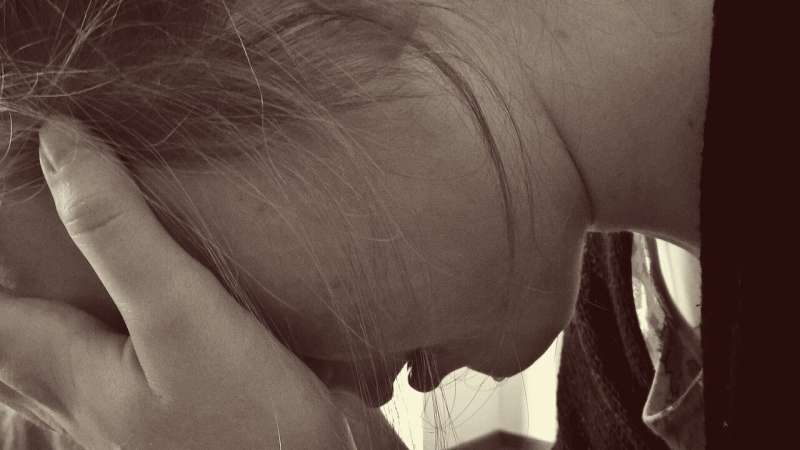This article has been reviewed according to Science X's editorial process and policies. Editors have highlighted the following attributes while ensuring the content's credibility:
fact-checked
trusted source
proofread
Newly developed scoring system can correctly predict suicide risk after self-harm, suggests study

A newly developed risk calculator that is based on 11 key social, demographic, and clinical factors can correctly predict suicide risk in those who have self-harmed within the previous 6 to 12 months, suggests research published in BMJ Mental Health.
Pending further validation, OxSATS, short for Oxford Suicide Assessment Tool for Self-harm, may help inform treatment decisions and the most effective targeting of resources, suggest the researchers.
The 12 month-period following self-harm is associated with a heightened risk of suicide that is estimated to be 20 times higher than that of the general population, the researchers point out. Around 16 million people self-harm every year, so the population impact of preventing future suicide is potentially large, they add.
But current structured approaches to predict suicide risk are based on tools and symptom checklists developed for other purposes, so they often fail to pick up those at risk.
To overcome these issues to better assist doctors, the researchers used real-life data from Swedish population registries to devise a more accurate scoring system for risk prediction. In all, 53,172 people aged 10+ years, who had sought emergency medical care after episodes of non-fatal self-harm, were split into two groups—one for the development of the new predictive scoring system and the other for its external validation.
The development group included 37,523 people: 267 (0.7%) died by suicide within 6 months; 391 did so within 12 months; and 540 (1.4%) took their own lives within 2 years. The validation group included 15,649 people: the corresponding figures were 108 (0.7%); 178 (just over 1%); and 251 (1.6%), respectively.
The researchers then assessed a range of potential factors associated with suicide risk within 12 months of the self-harm episode. These included demographic information, age, sex, medical history and treatment, mental health, history of self-harm, family psychiatric history, and substance misuse.
More than 10 outcomes per predictive factor were considered for development and more than 100 outcomes for validation.
Within the two years following an episode of self-harm, around 1 in 70 people died by suicide, with around 1 in 100 in the 12 months following the self-harm episode. Among those who died by suicide, average survival was 11 months in both the development and validation groups.
Factors associated with higher risk of suicide included: male sex; current or lifetime drug misuse; recent psychiatric disorder; recent use of psychotropic drugs (antidepressants, antipsychotics, mood stabilizers); lifetime and history of self-harm; overnight hospital admission; method of self-harm attributed to psychotropic drug overdose; and attempted hanging, strangulation, or suffocation.
The final model contained 11 factors: age, sex, and variables related to substance misuse, mental health and treatment, and history of self-harm.
The average age of those in the development and external validation groups was 32, and the proportion of women and girls was 55% and 56%, respectively. Some 44% of the development group and 47% of the validation group had been diagnosed with a mental health issue in the previous 12 months.
Cutting was the principal presenting method of self harm, used by 13% of the development group and 10% of the validation group.
Using a cut-off threshold of 1%, the scoring system correctly identified 68% of those who died by suicide within 6 months, while 71% of those who didn't die were correctly classified as being at low risk. The equivalent figures for risk prediction at 12 months were 82% and 54%, respectively.
If risk categories are applied in this scoring system, 32% of those who died by suicide would have been classified as low risk at 6 months and 18% as low risk at 12 months, assuming a 1% cut-off threshold, note the researchers.
However, they emphasize, "This is a considerable advance from other models where more than 50% are typically in the low-risk category."
They add, "From a clinical perspective, one strength of a prediction model is that it can improve consistency, especially in busy clinical settings and where assessment is conducted by people with different professional and training backgrounds; anchor decisions in empirical evidence; highlight the role of certain modifiable factors; and provide an opportunity to transparently discuss risk with patients and their caregivers."
But, they caution, "Without linkage to interventions, implementing a risk prediction model on its own will not improve outcomes. Future work will need to consider how the tool can be used, at what point, and how it can be linked to treatment."
More information: Risk of death by suicide following self-harm presentations to healthcare: development and validation of a multivariable clinical prediction rule (OxSATS), BMJ Mental Health (2023). DOI: 10.1136/bmjment-2023-300673















